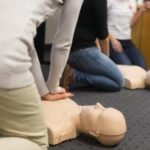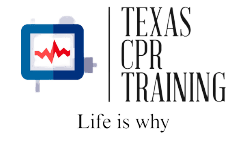If you’re thinking about getting a CPR certification you want to be able to save anyone’s life when the moment calls for it. To this end, you should know the difference between adult, child, and infant CPR.
If you’re thinking about getting a CPR certification you want to be able to save anyone’s life when the moment calls for it. To this end, you should know the difference between adult, child, and infant CPR.

Children and infants are a little more fragile than adults so you can’t use the same procedures for them that you would an adult. If you did, then you would end up doing more harm than good. Infants are even more fragile than children.
To help you understand the difference so you can save anyone’s life, here is are some more key differences between CPR procedures.
1. Adult CPR Steps
The main reason why adults need CPR is for cardiac arrest. While they can still suffer from blocked airways it’s much less common for them. Here are all the steps you need to take when trying to perform CPR on them.
Call 911
Before you start CPR on an adult you want to call 911. The only reason why you should begin CPR first is if the person has a blocked airway. If this is the case then you’ll want to perform CPR for a few moments before you call.
If there is another person in the room with you, have them call 911 while you begin CPR.
Check them for a Pulse
One part of CPR is checking for a pulse. When looking for an adult’s pulse the best place to start is their carotid artery. It’s located on their neck just below the jaw.
Rescue Breaths
It is recommended to not try performing rescue breaths if you’re not experienced with it. In most cases, you should be using hands-only CPR. If you do have to do rescue breaths, tilt their head back slightly, use a finger to clear their airway, and then begin the procedure.
Compression
2. Child CPR Steps
Children are most likely to need CPR due to a blocked airway. They have narrow air passages and tend to put anything in their mouths. You’ll be performing a lot of the same steps as you did with an adult but you’ll be doing them a bit differently.
Start CPR Before Calling 911
If you notice that a child is beginning to choke, you should start performing CPR immediately. They have a higher chance of surviving the ordeal this way.
This doesn’t mean that you shouldn’t call 911 at all. Wait until you’ve been performing CPR for about two minutes before you pick up the phone.
Rescue Breaths
You want to be gentle when giving rescue breaths to a child. If you tilt their head back too far you risk clogging up their airways more then they were before.
On top of not tilting their head back too far, you also want to make sure that you breathe a little more carefully too.
Compressions
For larger children, you can use two hands for compressions as you would with an adult. If you’re providing aid to a smaller child though, you should only use one hand.
The depth of the compressions should only be at 1/2 an inch rather than 2. The compression to breath ratio will be the same for children as it is with adults. You’ll do 30 compressions for every 2 breaths.
3. Infant CPR Steps
Babies are delicate so you have to be careful when you’re performing CPR on them. Their bones are fragile and you have to take measures to not jostle them too much.
Check if the Baby is Conscious
For children, adults, and infants you have to be sure that they are conscious before you begin CPR. When you go in for certification you’ll be taught to tap them on the shoulder. This will be a bit too much shaking for a baby.
Instead, you can tap the little one on the foot or stroke them and look for a response.
Perform CPR First
The infant will be more likely to survive if you start CPR right away. Like with children, you can call 911 after around two minutes of performing CPR. If you’re not alone you can have someone else call 911 one while you start CPR.
Check for a Pulse
You won’t check the baby’s neck for a pulse in the same way you would a child or an adult. The best place to look on a baby is on the inside of their upper arm. This is where their brachial artery is located.
Rescue Breaths
An infant’s airways are even more narrow than a child. It’s not unheard of for them to become blocked. This being said, if you tilt their head too far back you will do more harm than good.
Tilt the baby’s head far enough back where it appears like they are sniffing the air. No further than that.
When doing the actual rescue breaths, you never want to use the full extent of your lungs. Use your cheeks to expel a small amount of air instead.
Compressions
Babies are tiny so you should only use two fingers when you’re doing compressions. These compressions should only be around 1 inch to 1/2 inch deep.
The breath to compression ratio is the same for babies as it is for adults and children. Two rescue breaths per 30 compressions.
The Big Differences Between Adult, Child, and Infant CPR
If you’re thinking about getting your CPR certification, you’re going to want to be able to save everyone as the need arises. This means you need to know the basic differences between adult, child, and infant CPR. Use these tips to get a jump on your CPR education.
Are you ready to start saving lives? Go here to register for classes.
Learn the difference today at Texas CPR Training, www.texascpr.com

